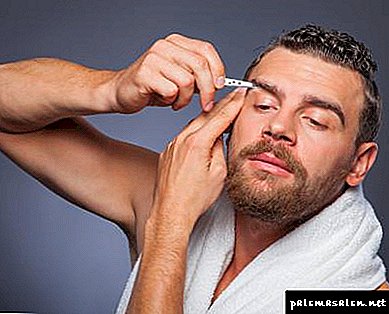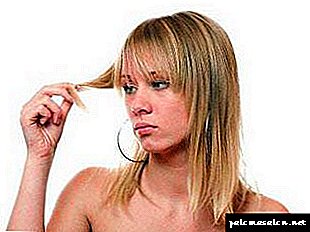Rough, scaly formations on the scalp of the newborn cause concern to the latter-day parents, but there is usually nothing to worry about. Most likely, this is how a harmless condition is manifested, which many parents call a “milk crust.” Milky crust ("ancestral dirt") - the popular name for seborrheic dermatitis, or seborrhea. Older children and adults are called dandruff.
Milk crusts in infants are extremely common. Many children with this condition are not in the field of view of medical services, so the exact number of cases is unknown. Most often they appear in the first or second month of life and, as a rule, pass within the next few weeks. Less commonly, this condition persists for 6–9 months or more.
Seborrheic dermatitis is not contagious, it is not a sign of poor baby care. In most cases, it passes by itself. In severe or persistent cases, the doctor may recommend a medicated shampoo or lotion. Daily washing of the baby’s head with a mild shampoo will help reduce and remove the crusts on the baby’s head.
Although it may look rather frightening, the milk crusts on the head of children usually do not bother.
Causes of "generic dirt"
The exact cause of the appearance of a crust on the head in a newborn is unknown, although some scientists suggest that this is caused by excessive production of sebum in the sebaceous glands and hair follicles.
A type of fungus called malassezia can grow in skin fat along with bacteria. This is another factor in the formation of a crust on the head of a child.
Seborrhea most often occurs in infants and adolescents. During these periods of a person’s life, hormone levels are high, which also plays a role.
Certain factors, such as extreme weather conditions, oily skin, weak immunity, stress and the presence of other skin diseases increase the likelihood of seborrhea in a child.
Each child's seborrheic crusts have different shapes and sizes. They can be combined into bundles, scales, or located far from each other on the body.
The affected areas have one or more of The following symptoms:
- Thick crust or plaque on the head of the baby. Sometimes it is on the ears, eyelids, eyebrows, nose, neck, groin or armpits.
- Sebaceous spots on the skin, covered with yellow or white scales.
- Dandruff in infants.
When do I need to see a doctor?
Usually, seborrheic dermatitis is easy to identify at home simply by looking at the crusts.
but See your doctor if:
- you first process the crusts,
- your child has crusts in places where he has no hair,
- you tried home procedures, and they all did not lead to success,
- skin condition worsens and a rash covers large parts of the body,
- a rash leads to hair loss or itching,
- the affected skin is hot, red and edematous to the touch - these are signs of infection,
- your child has a weakened immune system.
How to remove the crust on the head of a baby?
there is several ways to get rid of scales:
- Remove scales from baby's head. fingers. The scalp of the infant will not suffer if you use your hands, and not tweezers or any other auxiliary tools. This is the simplest and most effective way to get rid of scales and crusts.
- Rub the crusts with your fingers, then gently comb the scaly, dead skin,
- If you do not want to use your fingers to remove the crusts, wear a pair of thin latex gloves.
Make sure in advance that the baby is not allergic to latex. You can also cover your hands with a plastic film so as not to touch the scales,
How to remove the crust on the head of the baby, if the usual shampoo does not help?
Ask your doctor about OTC shampoos with medicinal properties or anti-dandruff shampoos. These products contain components (zinc, salicylic acid, ketoconazole and selenium) that will help in the treatment of dryness and flaking. Separate, stronger forms of these remedies require a prescription.
You may have to do this every day or twice a week. But after the skin condition is taken under control, the use of a medicated shampoo will be needed only once a month.
How to remove seborrheic crusts on the head using oil?
If the milk crusts on the baby’s head are not reduced, use baby or almond oil:
- Pour a small amount of oil on the tips of your fingers and gently rub into the scalp. Do small circular motions with little pressure. Let the oil stay for 15 minutes. It will moisturize the skin and help loosen the scales on the head, facilitating their removal.
- Take a soft baby hairbrush and clean the baby's scalp, again using small circular motions. This helps to separate the scales from the scalp, so they will be easy to remove from the hair.
- Wash baby's hair with a soft baby shampoo. Apply shampoo and leave it on your head for a few minutes while bathing the baby. This allows the shampoo to dilute the oil so that later it can be easily washed off the hair. After washing your hair, wash the shampoo thoroughly.
Shampoo, which is badly washed off the scalp, can cause dryness and dandruff.
For seborrhea of other parts of the body or severe irritation of the skin of the child, steroid creams with hydrocortisone can be successfully used.
Preventive measures
- Moisten the air in the room. An infant with seborrhea often has other manifestations associated with dry, easily irritated skin.
Use a humidifier in the baby’s room to maintain optimum air humidity so that the baby’s skin does not become too dry,
Seborrheic dermatitis may disappear within a few months and then suddenly appear. But by following the steps above, you can control it.
Causes of crusts
Regardless of whether the baby was born with or without hair, a patina will appear if the parents do not follow the rules for caring for the newborn. This is due to the physiology of the child, because thermostatic functions develop closer to 5 years.
The baby’s skin has not learned to breathe properly, and the sebaceous glands clog the pores. As a result, a raid forms on the head of the child. In the people it is called "lullaby hats."

The causes of seborrheic crusts on the head in infants include the following:
- Parents, showing excessive care, try to wrap the baby to avoid colds. Even in a warm room, he is carefully dressed, and a bonnet is put on his head. In this case, the sebaceous glands are involved in active work, which contributes to the appearance of plaque.
- Seborrheic crusts on the head of an infant can occur as a result of frequent bathing with the use of cosmetics, which include chemical components. Excessive impact on the skin contributes to the failure of the sebaceous glands. As a result, seborrhea occurs.
If the above reasons are not observed in the care of an infant, then the appearance of crusts may be due to the manifestation of an allergy. Contribute to the occurrence of such a reaction foods that are consumed by a nursing mother, or infant formula with artificial feeding.
How to remove seborrheic crusts in infants
Despite the fact that raid on the head of a baby is a natural process, it is not recommended to start it. Bacteria that are capable of infecting hair bulbs take part in the development of seborrhea. There is an opinion that the baby’s yellow crust will pass by itself by the year. However, do not wait so much time.
If parents are sure of this, then mom should take a number of measures:
- The child must be dressed in accordance with the ambient temperature. At a temperature of 24 degrees, the infant must remain without a cap. This will allow the scalp to "breathe."
- Bathing a child every day is not prohibited, but it is best to abandon the use of cosmetics. The choice of parents should focus on ordinary soap, but it is not recommended to use it more than 1 time per week. It is enough to wash in herbal broths.
- Babies who were born with hair should be combed regularly. To do this, mother needs to buy a special baby comb made from natural materials. This will prevent the occurrence of seborrheic crusts on the baby’s head, the photos of which are presented in the article below.

By taking these actions, you can prevent the occurrence of yellow bloom in the future.
Step-by-step instruction
The main recommendations include:
- 1-1.5 hours before bathing, the skin is oiled. Usually cosmetic baby or vegetable. You can use salicylic ointment or petroleum jelly. A cap is put on the head, which is removed after 1 hour. This will soften the sebaceous formations. Then gently combed, so as not to injure the skin.
- During bathing, wash the baby’s head with baby soap, rinsing thoroughly. They lather their heads 1 time per bath. It is better to repeat the following procedure in a week.
- When hairs dry out, they must be combed first with a comb with blunt teeth. Then a soft brush.

In the process of using the described actions it is impossible to overdo it - even milk crusts cannot be removed from the first time. But starting the fight with them, mom launches the process of their rejection.
Recommended tools
When seborrheic crusts appear on the baby’s head, parents think how to remove them using modern baby care products. Among the large number of varieties of such cosmetics can be called the most effective:
- Baby soap BabyBorn. The tool contains special oils that easily cope with seborrheic crusts.
- Cream STELAKER. It is produced by the company Mustela. It was developed specifically to combat the milk crusts of the baby.
- Shampoo Biolane. The tool removes plaque and moisturizes the skin. As a result, the sebaceous formations soften.
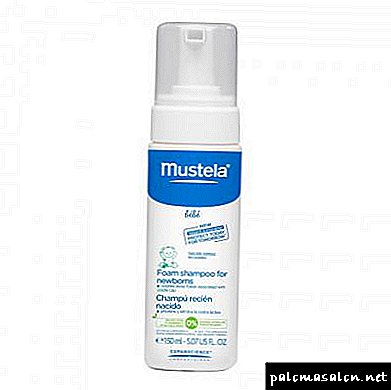
In addition to these cosmetics, you can choose others. To be useful, you must carefully examine the composition of the drug. After all, some funds can be harmful, aggravating the situation. In this case, you will have to remove the crusts from the child with drugs.
How to remove seborrheic crusts in infants? If all the efforts of the parents were unsuccessful or caused allergies, then they are best to turn to a pediatric dermatologist.
Tightening with a visit to the doctor is not necessary - the bacteria that develop in crusts, multiply rapidly. Sometimes the baby has bleeding wounds on the head.
The specialist will examine the baby, prescribe the necessary research and other types of diagnostics. This will help establish the causes of seborrheic crusts. Only after that the appropriate treatment will be carried out. It includes:
- Taking antihistamines when the cause is allergies.
- If necessary, prescribe probiotics, with which they restore the intestinal microflora of the baby.
- Shampoo is selected, which includes medicines.
Sometimes a specialist makes an appointment and the mother of the newborn, if she nurses him. In this case, the course of treatment may vary in duration and depends largely on the desire of parents to strictly follow all the instructions of the doctor.
Opinion of the famous pediatrician
Dr. Komarovsky claims that seborrheic crusts on the baby’s head are an age feature of many babies. He associates this with hyperfunction of the sebaceous glands. The child is usually not bothered by the crusts themselves, but by the process of combing them out, which is not mandatory. If the baby has long hair, it is impossible to get rid of the crusts without a haircut.

Parents should be aware that the baby’s raid on the baby passes on its own sooner or later. However, to comb them, you need to make a baby haircut.
Before removing the crusts on the head, they can be softened with any vegetable oil. Then use a scallop with blunt teeth.
Care features
Choosing the right shampoo is a priority, but not the main task. Parents should not constantly muffle a child in a blanket. Do not put a hat on the baby’s head if it is indoors.
Many pediatricians speak about the observance of the correct temperature regime. They are sure that overheating results in various irritations on the skin.

Proper care for children's curls contributes to:
- Individual comb and scallop. They should be soft and consist of natural fabrics.
- Careful washing of hair and careful combing.
- The use of not tight gum and rounded pins.
Proper care of the child's hair will help prevent the occurrence of seborrheic crusts on the baby’s head. All the problems that arise in the infant are surmountable, and the first modest fluff will soon turn into thick and shiny curls.
Prevention
Seborrheic crusts on the face of the infant, as well as on the head, can occur regardless of the nutrition of the newborn. However, some recommendations can reduce the manifestations of pathology to a minimum. These include:
- The appearance of skin reactions should alert the parents and they should visit a specialist. The sooner the problem is fixed, the sooner you can get rid of it.
- In the children's room, the air temperature should not be higher than 20-22 degrees, and the humidity - 50-60%. Be sure to conduct daily wet cleaning and constant airing of the room.
- Toddler should be worn in accordance with the weather and air temperature at home.
- Parents should especially carefully select care products for the baby. They must be of high quality and natural.
- Bathing a newborn is best daily. In this case, the shampoo must be used twice a week.
- A nursing woman should carefully monitor nutrition, and it is best to follow a hypo-allergenic diet.
- If the child is on artificial feeding, then you need to choose dairy-free formula and cereal.
A special help in establishing the correct microclimate in the baby's room will be able to play a humidifier. It solves the problem of dryness of the skin of an infant and its mucous membranes.
Opinions of parents
How to treat seborrheic crusts on the baby's head? Reviews of parents in this case are almost the same.
Many mothers for some time (30-40 minutes) before bathing smeared places where there were crusts. While bathing, they were washed with shampoo and then carefully removed using a comb or comb.

If carried out correctly, the procedure was not repeated in the future.
Seborrheic crusts on the head in babies occur under the influence of many factors. With proper care, they disappear over time and do not cause any discomfort to the child.
Where do the crusts on the head come from?
Noticing the whitish-yellow crust on the scalp and hair of the child, do not rush to panic and suspect some skin disease. What you see is not dandruff, and the presence of seborrheic crusts does not cause the baby any inconvenience.The only reason for their appearance is too active work of sebaceous glands, which is why excess sebum spreads all over the head and, drying out, takes on the appearance of crusts.

The reason for the increased secretion of sebaceous glands may be insufficient air access to the scalp, as well as a number of other reasons.
How to prevent the formation of seborrheic crusts
Therefore, to prevent the formation of seborrheic crusts, follow the tips below.
- Do not wrap the child excessively.
Always wear your baby for the weather when you walk with him. If the house is warm enough, do not put a hat on the baby and allow the scalp to breathe. - Say no to synthetics.
All clothing baby should be, if possible, from natural fabrics. This is especially true of hats, because synthetics do not allow air to pass through, which causes seborrhea. - Bathe your baby with special baby soap and shampoo.
In children's products does not contain harmful substances that are in ordinary shampoos and can cause disruption of the sebaceous glands. But even with such tools you should not overdo it - you need to use them no more than twice a week.
- Keep the room where the child is at a constant temperature and humidity. This will eliminate the need to wrap the baby, and thus prevent the appearance of seborrheic crusts.
- Keep track of your diet even during pregnancy.
Mothers who consumed spicy, fatty, and salted foods before delivery are more likely to experience seborrhea in their children.

How to get rid of crusts using baby shampoo (gel) Mustel Bebe: no analogues
Not always and not everything can be foreseen. What to do if seborrheic crusts have already appeared? There is a rather effective remedy - shampoo from seborrheic crusts of Mustel for babies. It is designed specifically for the delicate removal of seborrheic crusts in newborns, therefore it is suitable for the smallest. Here are the features of this shampoo:
- approved by pediatricians and dermatologists,
- supports alkaline balance of the scalp,
- a special formula strengthens the skin barrier and preserves the cellular resources of the skin,
- does not irritate the eyes,
- 99% consists of natural components, without parabens, phthalates, etc.,
- easy to apply, foams and completely washed off
- shampoo effectively removes seborrheic crusts and prevents the emergence of new ones,
- convenient dispenser bottle.
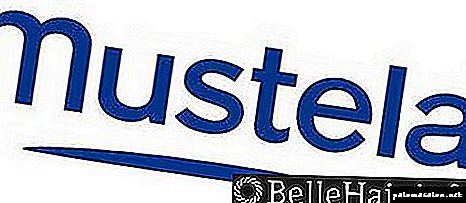
Mustel's baby shampoo from seborrheic crusts has already been tried by many, and 97% of mothers rated its quality and effectiveness. Today, Mustela's children's series includes all the necessary tools for baby care.
Use correctly shampoo foam for newborns: the price is responsible for the quality
To get rid of seborrheic crusts and not damage the delicate skin of the baby, it is important to responsibly approach the procedure. Mustela shampoo from seborrheic crusts is easy to apply and foams, so it is convenient to work with it. After careful application, gently massage the skin and leave for 1-2 minutes, then rinse off with warm water. Due to its soft plant formula, mustela foam shampoo for newborns is well washed off, leaving the hair soft and moisturized.

Advice! In no case do not try to tear off the crusts or comb them with a hard brush, as this will damage the skin. Use Mustel's baby shampoo from seborrheic crusts and a soft brush to remove the crusts safely. From the age of three months, you can also try Emolium shampoo from seborrheic crusts - it also has a natural composition and is economically consumed.
How to remove the crust on the head of a child? Mustela Bebe shampoo from seborrheic crusts is not a panacea, but you cannot do without it. The best remedy for the crust on the head of the baby. Where to buy Mustela 2-3 times cheaper? + many photos, analysis of the composition
Good day to all! Today I will talk about our salvation from the crust on the child's head, the hero of my review is Mustel's shampoo from seborrheic crusts. I'll tell you where to buy 2-3 times cheaper!

Our son had a crust on his head about one month after birth. At first there were not many of them - literally a couple, on the very top, I lubricated them with oil, gradually combed them out and didn’t really worry about that. But gradually they captured all the large areas of the little head, and by three months the baby began to look like a dragon - so many yellow scales were on his head, and even on his eyebrows (I think the situation was aggravated because of atopic dermatitis, which began to manifest in his son just in three months). Not only are such crusts not aesthetic, sorry, for the intimate details, they are smell very unpleasant. Before the birth of my son, I often heard the phrase: "Babies smell like angels." So, in three months, our son certainly smelled something more earthly :)))
I decided not to wait for the crusts to pass by themselves (especially since, when combed out along with yellow scales, hairs also pulled out, literally bunches). As always, Google came to the rescue - and literally every discussion on the subject of milk crusts was mentioned shampoo Mustel from seborrheic crusts. In our pharmacies, Mustela is sold for some cosmic prices - consider suite for babies But for children, as you know, nothing is a pity, and I was ready to give any money for this coveted foam. But everything is not so simple in Belarus. This foam is not for sale in our pharmacies and stores. at all. And I found it only at outbid, for the price $ 15 for 150 ml.
★ ♥ ●● ● Hypoallergenic. Without parabens, phthalates, phenoxyethanol. Formula without tears. • ● ●● ★


Baby Shampoo
Shampoo foam is designed to gently cleanse the scalp of children from birth.
Promotes the removal of "milk crusts".
PROPERTIES:
- Thanks to the formula enriched with Avocado Perseose ®, the patented natural component, it helps to strengthen the skin barrier of the mouse and preserve the cellular resources of its skin.
- Carefully cleanses, maintaining the PH balance of the scalp from birth.
- Not stinging eyes.
Like all Mustel's children's cosmetics, this tool should be used within six months after opening the package.
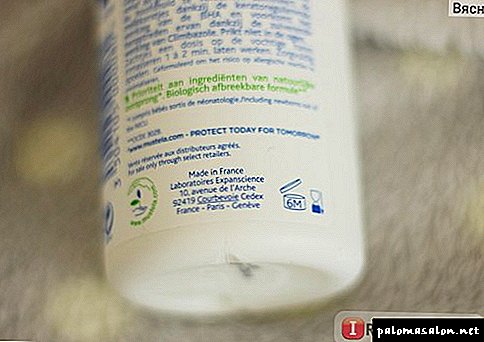
COMPOSITION
The manufacturer claims that 99% shampoo consists of ingredients of plant origin.

AQUA / COUNTRY EXTRACT.
There are no aggressive surfactants in this foam, which is very pleasing.
Coco-glucoside andDisodium Cocoyl Glutamate - soft surfactants of plant origin, coconut derivatives
Glyceryl Caprylate -vegetable emulsifier
Citric Acid - citric acid, in cosmetics often acts as an exfoliating agent
Tetrasodium Glutamate Diacetate - complexing agent
Climbazole - antifungal component
Sodium Cocoyl Glutamate - one more soft surfactant of plant origin
Parfum - perfume
Salicylic Acid - salicylic acid. It has anti-inflammatory effect, cleanses the skin, exfoliates dead skin cells, helps with seborrhea, regulates sebum production
Sodium Hydroxide - emulsifier. Not the most useful component (can cause dermatitis), therefore it is used in cosmetics in minimal concentrations.
Sorbic acid - sorbic acid, natural preservative
Persea gratissima (avocado) fruit extract -avocado extract. Moisturizes, nourishes the skin.
Of course, the composition is not the most natural - the only truly natural ingredient (avocado extract) was lost in the saaaaaaamy end of the list, but there are no critically dangerous components in it.
PACKAGING
The bottle is equipped with a convenient dispenser, one press = one portion of the foam, it is enough for the whole head. The foam is consumed very economically.


MODE OF APPLICATION
Wet the baby's head with warm water and apply a small amount of Shampoo Foam in your palm. Then apply the product to the child's hair and gently massage. Leave for 1-2 minutes, then rinse thoroughly with water.
Despite the fact that the manufacturer recommends leaving the tool for 1-2 minutes, we went our way. Before bathing, combed hairs with a soft brush with natural bristles. The foam was applied at the very beginning of bathing and washed off at the end - approximately 10 minutes later (immediately after applying, I easily massaged the scalp). After bathing, whenever possible, I combed out the crusts with a flat plastic comb - fortunately, my son was not against combing, he even liked this procedure.
Probably you expect me to report as if the foam cleaned us the crusts after the first application Alas, there are no such miracles (at least in our "hard" case). The crusts did not go away either after the first or after the fifth application of the foam. But! Gradually, they became smaller. And they stopped to smell, which was especially pleasing.
One day, an allergist advised us, in addition to Mustela's skin, almond oil (of course, some foreign, more expensive, but I bought the cheapest in a pharmacy, produced in Belarus). When I began to apply almond oil half an hour before bathing, and then rinse it off with Mustel's foam - the crusts began to disappear literally before our eyes. And so, by 5 months, we forgot about this byaku. Ttt, a few months have passed - the crusts have not returned.
About a month after I began using foam, when I saw noticeable results, I met www.pharmashopdiscount.com, and what was my surprise when I found Mustel on this site less than 6 euros!! That is, almost 2.5 times cheaper than I bought from us O_o oh these outbid Of course, in my first order on this site I included Mustel's foam - in reserve. True, we no longer need it, because the crusts are gone. And the rest of Mustela cosmetics, including the Stelatopia series, on this site is 2-3 times cheaper than ours.
▼▲▼▲▼▲ If you are thinking of making an order on the website linkwrite me in private messages, I will provide you 5 euro discount promo code on the first order.
Of course, I am pleased with this remedy and recommend it to all young parents who are faced with milk crusts in infants. I can not call this tool a panacea, but nothing better cosmetic and medical industries have not yet come up with.
Features children's dandruff shampoos
Children suffer from white flakes in their hair for various reasons: due to errors in nutrition, certain diseases, low physical activity, poor shampoo and hard water, and violation of hygiene rules. This is true for children who are already out of infancy.

But what to think attentive parents who notice a kind of dandruff on the heads of their newborn baby? Do not be afraid, because this phenomenon is quite common among infants. Formations on the skin are called seborrheic crusts and are caused by overheating, allergies to cosmetics and for some other reason. That is why any baby shampoo should be purchased only after a captious examination of the label.
Selection rules
- Firstly the tool should fit your child by age. There are universal drugs allowed for adults and children (with some restrictions), and there are exclusively children's products. Not every shampoo can wash the head of a child who has turned 8 or 10 years old and at the same time one year old baby.
- Detergent for children's hair should gently, but at the same time, effectively clean the baby's head, prevent further occurrence of flakes and horny scales, normalize the microflora of the skin. Do not buy products containing aggressive detergent ingredients.
- If your baby has a tendency to allergies, pay special attention to the list of ingredients on the bottle. Eliminate shampoos that have dyes or perfumes.
- Do not take cosmetics for hair that contains sulphates and parabens.
- The manufacturer must ensure that the drug does not pinch the eyes.
Council Read reviews about specific brands, ask on the forums, what tools choose mothers and what they are guided by.
What should be in the composition
 With the crusts and symptoms of seborrheic dermatitis, the following components do well:
With the crusts and symptoms of seborrheic dermatitis, the following components do well:
- glycerol - moisturizes and softens the sensitive dermis of the baby, thereby helping to stop peeling,
- ichthyol - heals the skin, soothes it if there are irritated areas,
- zinc - destroys the fungal infection, which often provokes desquamation,
- herbal extracts, oils - take care of the hair,
- vitamins - nourish the dermis and hair, improve their condition. Also sometimes in composition salicylic acid. It helps to cope with crusts, disinfects the dermis, although in its pure form (as an ointment, alcohol tincture) is not recommended for children of at least one year of age.
Do you know if your child is allergic to any ingredients? Choose a hair product with a minimum set of ingredients. Often, even herbs or essential oils cause an undesirable reaction of the child’s body.
Advantages and disadvantages
The advantages of children's washing products for hair include:
- sparing composition, often mostly natural,
- quick effect
- ease of use
- improvement of skin and hair.
The disadvantages of shampoos for the younger generation are also:
- Often - the high price associated with the use of natural ingredients
- the risk that the remedy will cause allergies
- the need to carefully choose a product that would best suit the baby.
Contraindications
If the shampoo is designed for a specific age category, then it may contain a contraindication: idiosyncrasy of one or several components. In this case, make sure that there is no allergy.
Medicinal products that can be used at the same time for children and adults sometimes contain additional instructions. Carefully read the instructions for specific drugs. Also, do not use shampoos if the baby has wounds on the head, damages.
Shampoo overview
- Chicco. A 2-in-1 foam shampoo is recommended from birth, as indicated by the label 0+ on the bottle. Wheat proteins soften the delicate skin of the infant, preventing the formation of seborrheic crusts. Chamomile and hawthorn extracts protect the head from the occurrence of irritation. The tool can be used to wash hair and body, as it keeps the skin's normal pH. Price for 0.2 liters - about 170 rubles.

- Mustela. One of the most popular products for soft baby hair. 99% consists of components of natural origin. There is a moisturizing avocado oil, anti-inflammatory salicylic acid, cleansing climbazole, but there is no parabens and soap. Shampoo foam gently washes away dirt and removes seborrheic formations, maintains skin balance. Mustela costs about 900-1000 rubles per 150 milliliters.
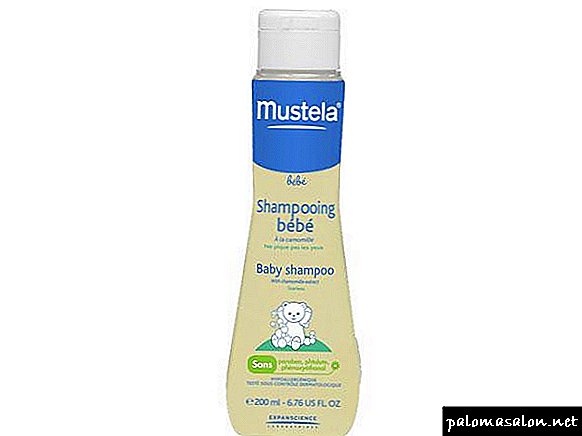
- Pediatric babe. It has a peeling, antimicrobial effect, relieves the heads of infants from crusts. Contains salicylic acid (regulates the sebaceous glands, promotes skin renewal), calendula extract (heals damage), hair conditioner and other components. It does not contain mineral oils, dyes, parabens. Treats hypoallergenic products. Available in 0.2 liter bottles. The cost is about 550 rubles.

- La cree. Shampoo foam designed for babies with dry, sensitive skin, on which there are signs of seborrheic dermatitis. Can be used from birth. Contains antiseptic - salicylic acid. Oils and olives and jojoba moisturize the dermis, normalize the functioning of the sebaceous glands. Licorice extracts and violets have anti-inflammatory, soothing effect.Wheat proteins contribute to the regeneration of the skin. Bisabolol relieves inflammation, panthenol eliminates dryness. The price is about 200 rubles for a 150-milliliter bottle.
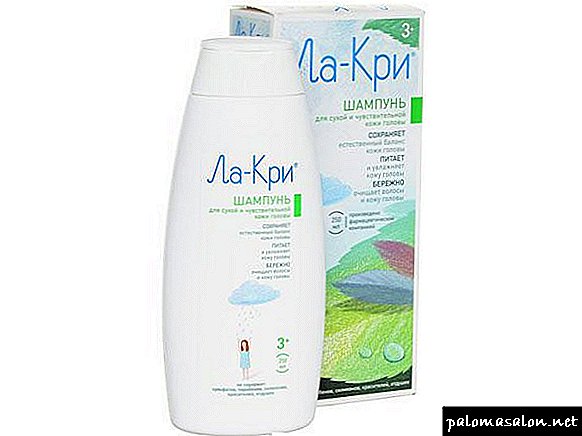
- My baby. Russian cosmetic product is suitable for newborns, has a hypoallergenic composition. It includes zinc, chamomile extract, allantoin (softens, moisturizes the skin). Some users are confused by the presence of sodium laureth sulfate (detergent component) in children's shampoo. In addition, mothers often note the ineffectiveness of the drug against infant crusts, although the manufacturer emphasizes this. The tool has a democratic price - about 80 rubles per 200 milliliters.

- LIBREDERM. The drugs of this brand are not designed specifically for children, but do not have age restrictions. From contraindications - only individual intolerance to the components, and the composition is free from parabens, perfume fragrances, dyes. But it is still better to use these means only according to indications, if the child has dandruff (it is not about seborrheic crusts of babies, but about problems of an older age). Libriderm Zinc is recommended for dry skin, and shampoo with tar for oily. The cost of any is about 400 rubles for 0.25 liters.
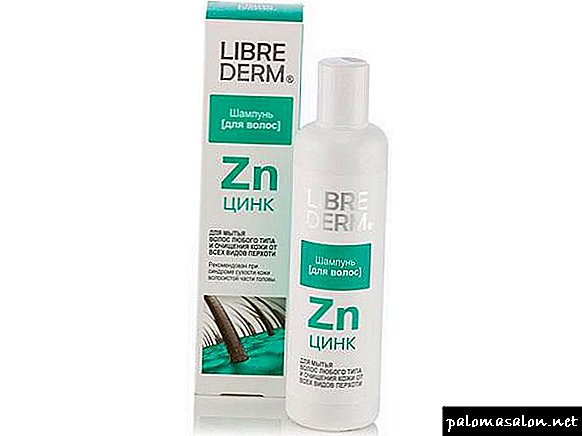
- Nizoral 2%. It can be used from infancy as it has almost no contraindications (except for individual allergic reactions). The main active ingredient is ketoconazole, which is an antifungal component. Reduces itching, peeling, eliminates white flakes on the hair. Softens the skin and cares for curls. It costs an average of 600 to 900 rubles, because it comes in two dosages: 60 and 120 milliliters.

- Sebosol. Sparing agent for skin and hair. Suitable for kids from 1 year. The active ingredient ketoconazole destroys the fungus. The shampoo regulates the activity of the sebaceous glands, exfoliates the crusts, improves the hair structure. Available in bottles of 0.1 and 0.2 liters. The cost is about 300-450 rubles. There are also sets of 5 bags, each of which contains 5 milliliters of medicinal fluid (the price is around 140 rubles).

- Sebopyrox 911. Designed for adults and children not younger than 2 years, although the composition is almost completely chemical. This includes sodium lauryl sulfate. Also among the components - birch tar, glycerin, and other ingredients. Using shampoo reduces the activity of fungal microflora, relieve itching and irritation. It cares for hair and removes dandruff without damaging the outer layer of the skin. The price is about 130 rubles. In a bottle of 150 milliliters.

- Sulsena. Under this brand comes a few drugs: regular shampoo, as well as pasta and peeling. Cost - from 80 rubles for 40 milliliters to 300 rubles for a 150-milliliter bottle. It contains selenium disulfide, which normalizes the activity of the sebaceous glands, suppresses harmful microflora, effectively peels dead skin particles. May be used as directed by a doctor if the child suffers from seborrheic dermatitis.

- Friederm Zinc. It does not have separate recommendations for use for the younger generation. Although some pediatricians prescribe Friderm to young children not only with crusts on the head, but also with signs of atopic dermatitis on the body, in the form of baths. There are no dyes and perfumes in the shampoo. It eliminates the symptoms accompanying the occurrence of dandruff, improves the hair structure. A bottle of 150 milliliters costs about 670-700 rubles.

Attention! There are other shampoos for babies and teenagers. If the package does not indicate age restrictions, consult your doctor before purchasing.
Rules of application
- To rid the child of infant crusts, soften the skin before using the shampoo. Apply boiled burdock or other oil to the scaly particles, you can use Vaseline. Do it 1–1.5 hours before bathing by doing a gentle head massage.
- Moisten your hair, make a little of the cleansing drug, and leave it on the curls of the child for 1-2 minutes.
- Wash off the shampoo, gently blot the head of the baby with a towel and start combing the crusts. Use for this comb with natural bristles.
- Repeat the procedure every 3-4 days, until you gradually remove all the scales.
- If you are treating a child for seborrhea, the first month wash your head with a special shampoo no more than 2-3 times a week, then 1 time in 7 days for 1.5 months.
- Lather your hair and skin with gentle massage movements. Do not hold for more than 3-5 minutes.
- Rinse with warm water, which can add lemon juice (vinegar should not be taken).
- Do not use shampoo if the child complains of discomfort.
- Make sure that the drug does not get into the eyes, ears.
- To avoid damaging the baby’s delicate skin, wash your hands thoroughly before taking a bath, remove bracelets and rings from them.
Specific manufacturers may give slightly different recommendations on the use of their own products, so read the instructions.
Effect of use
 After the application of special children's cosmetics, the baby's hair will become soft, silky, docile. Combing will be a more pleasant procedure. Crusts will soften, become supple, and they can be removed without giving the child discomfort.
After the application of special children's cosmetics, the baby's hair will become soft, silky, docile. Combing will be a more pleasant procedure. Crusts will soften, become supple, and they can be removed without giving the child discomfort.
If you use a therapeutic drug for seborrhea and dermatitis, after a few procedures you will notice a decrease in the amount of white flakes in the hair of your offspring. Itching will decrease, and the scales will peel off faster.
The problem of seborrheic crusts and dandruff in children is often caused by factors that are easily eliminated: compliance with the thermal regime, proper nutrition, adequate physical exertion and exposure to fresh air. Watch your baby's hygiene, pick up his makeup by age, and then dandruff will be only a temporary phenomenon, which a special shampoo will help to cope with.
Useful videos
How to get rid of dandruff.
Dandruff in infants and preschool children: causes and treatment.
Causes
Due to the imbalance and disruption of the sebaceous and sweat glands, the tender and thin scalp of a newborn loses its ability to fight infections and bacteria. This gives rise to the spread of Malassezia furfur, which forms a seborrheic crust.

The following factors can lead to this imbalance:
- sweating on the head of the child due to its overheating,
- lack of proper maternal nutrition,
- complementary feeding allergy
- chronic diseases of the child,
- violation of the hygiene of the baby's head.
- use of unsuitable bathing products,
- hormonal changes in the body,
- the appearance of an allergic reaction to the mixture during artificial feeding,
- weakening of immunity.
- Yellow or white crusts appear in the area of the hair on the head, forehead, cheeks and in the ear folds.
- With a large accumulation of them, a scab is formed.
- The crust after soaking when combing easily leaves without the use of additional force.
- Lack of itching, irritation and pain.
- Externally, crusts are similar to scales that have a fat shine.
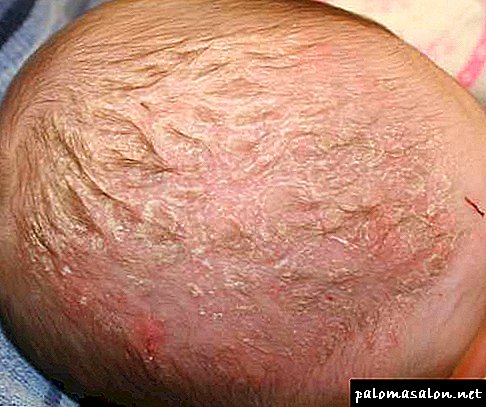
How to eliminate
From the untapped form of this dermatitis you can easily get rid of at home. To determine whether your child needs the intervention of a doctor, you need to look at the head of the newborn: if, while scratching, the crust is easily removed without leaving wounds, it means that you will be able to cope with the disease yourself.
Mechanical removal of crusts
To remove unaesthetic crusts at home, you must adhere to the following rules.
- 2-3 hours before bathing, treat the affected part of the baby’s head with baby oil. Keep in mind that every crust must be missed. So that the baby does not get dirty, you can put a hat on your head.
- Next, you need to wash the head with baby shampoo, and then blot with a towel.
- For bathing, you need to use only natural hypoallergenic products that do not contain artificial flavors.
- After it is required to comb the crusts using a comb with rounded teeth. The child must have a personal comb.

- In no case should not apply force in the removal of dried scales. If a crust is not removed, it must be processed the next time, starting the procedure again.
- If the scales are not removed well, it is necessary to increase the time for them to soften with oil.
Moisturizing Treatment
- Cleansing oils. You can gradually soften dry lesions on a child’s head with almond, peach or olive oil.
- Means for cleansing. At night it is necessary to apply a hypoallergenic cleansing preparation, and after sleep thoroughly wash it off. Using this method, the crust can be eliminated during shampooing. Also, the funds are able to regulate the functioning of the sebaceous glands and prevent the recurrence of the disease.
- Shampoos against seborrhea. The selected shampoo should be applied to damp hair and lather well. Next, you need to leave the foam on the head for five minutes, then rinse thoroughly.
- Dermatological creams that have a therapeutic effect. To remove the crusts, the cream must be applied to dry skin 1-2 times a day. This method does not require rinsing the drug. Healing creams are able to normalize the functioning of the sebaceous glands and get rid of dermatitis due to its antimicrobial action. Creams can be used to treat seborrheic dermatitis on the face, cheeks and behind the ears.
These funds can be used no more than 2 times a week for 1.5 months. The necessary remedy is prescribed by a doctor.
- Treatment with medications is required when the disease passes into a neglected form and if seborrheic crusts appear in a child older than 1 year.
- You should not try to tear off the crust with a fingernail, as well as in a dry state. Otherwise, the rapid spread of new scales and the occurrence of an infection that attacks the infant through injuries to the skin can begin.
If the treatment with the help of cosmetics has led to an allergic reaction, they should be immediately washed away and no longer used.
Complications
Complications may occur if:
- wrong treatment was performed,
- neglected hygiene,
- mother did not follow a diet
- the skin dries constantly.

Consider the main complications that may arise in this situation:
- The defeat of other parts of the body. Usually this process is accompanied by the appearance of other skin rashes, redness and itching. Also, an untreated crust can develop into atopic dermatitis, if the child is endowed with a predisposition to atopy.
- Infection on the affected skin. Staphylococcus or streptococcus, which forms ulcers, often joins seborrheic dermatitis, as a result of which the disease passes to the inguinal, axillary and buttock areas. In this case, it will be possible to remove the lesions only after undergoing drug treatment with the help of antibacterial drugs.
An overview of the main tools to combat seborrheic dermatitis
- "Bioderma Sensibio D. S.", "Saforel", "Topikrem". To get rid of the crusts on the head of a baby, you can apply these products after washing, which moisturize the affected skin well.
- Friederm Zinc, Nizoral, Friederm Tar, Kelyual. These shampoos are designed for shampoos affected by seborrheic scales. They treat the disease by moisturizing the skin on the head of the newborn, fighting the fungus, rendering anti-inflammatory, fungicidal and keratoregulatory actions.

- Mustela Stelaker Cream moisturizes crusts at night, while Mustela Bebe Shampoo Shampoo washes away night cream, providing antifungal action.
Seborrheic dermatitis in infants is not the most terrible diagnosis, but he also needs treatment. With the daily observance of preventive measures, no seborrheic crust will not be able to affect the future health of your baby. If the infant has undergone the disease, it is necessary to immediately begin treatment in order to prevent the development of possible complications.
Why does a baby have seborrheic lesions and dandruff?
Seborrheic (milk) crusts appear as a result of excessive work of the sebaceous glands and in some cases stick around the entire scalp. In fact, they are the advanced stage of dandruff, so its appearance in newborns should alert the parents. Causes of dandruff and seborrheic crusts. The most common:
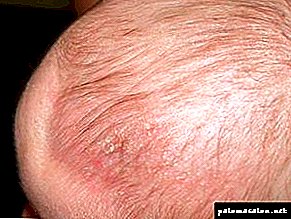 diathesis,
diathesis,- allergic reactions
- washing the baby's head too often,
- profuse sweating,
- poor nutrition of a nursing mother,
- hats made of synthetic materials
- the use of low-quality shampoos with harmful additives,
- Constant wearing of the cap, which prevents access of oxygen.
Sometimes crusts appear for no reason. This is due to the extremely delicate skin of the baby and the still not fully formed processes of regulation of the sebaceous and sweat glands.
Features of therapeutic agents for newborns
Dandruff shampoos and crusts on the head can boast not many manufacturers. The principle of operation of such funds is aimed at softening and further removal of crusts. They simply “wash out” the dandruff and struggle with the causes of its appearance. However, one should not expect an immediate result even from the most effective means, the removal of crusts does not take place in one day, so you need to be patient.
The main components of most medicated shampoos are:
- Softening cosmetic oils,
- extracts and extracts from flowers and medicinal plants,
- salicylic acid or any other antiseptic,
- panthenol (accelerates tissue repair).
Treatment is carried out due to the fact that A special shampoo performs the function of a “moisturizer” with the help of its constituent components.. Moistening and softening seborrheic "islands" it becomes possible to remove them safely and safely. In most cases, they depart themselves, but this happens after several uses.
Top 5 best tools for babies

Specially developed by the Clover Company, the “Lapochka” medicated shampoo is designed to combat seborrheic crusts and dandruff. In its composition:
- antifungal component "Climbazol",
- aloe extract
- Peach oil,
- milk proteins.
Pros:
- approved by dermatologists,
- has an innovative formula
- can even be applied to sensitive skin,
- has a soft, airy consistency,
- convenient packaging with dispenser,
- affordable price,
- fights crusts well and prevents them from re-occurring,
- does not contain allergens, silicones and sulphates.
Minuses and side effects have not been identified.. Volume: 150 ml. Price: 175 p.

Shampoo “Bubchen” from Germany for babies from crusts on the head. The composition contains natural ingredients:
- wheat proteins
- aloe vera extract (heals)
- panthenol (restores),
- chamomile extract (soothes).
Advantages:
- does not contain PEG emulsifiers,
- gently cleanses the hair and scalp
- does not sting his eyes and does not cause tears,
- well softens and helps to remove crusts,
- nourishes and protects the delicate scalp from drying out.
The disadvantages and side effects of shampoo does not have. Volume: 200 ml. Price: 209 p.
Pediatric babe

Professional Pediatric BABE shampoo from Spain is recommended for cosmetic care of the scalp and hair of babies. Easily cope with manifestations of seborrhea, removes milk crusts and eliminates dandruff. The composition contains:
- provitamin B5,
- extracts of calendula, aloe vera and mimosa,
- salicylic acid
- hair conditioner.
Pros:
- does not contain mineral oils and alcohol,
- the pH level is 5,
- shampoo hypoallergenic,
- promotes healing of skin lesions,
- has a convenient bottle.
It has no minuses and no side effects were found after applying the shampoo.. Volume: 200 ml. Average price: 600 p.
Bioderma ABCDerm

French medicated shampoo “Bioderma ABCDerm” is intended for washing the head, combating the beginning seborrheic dermatitis and dandruff (from the first days of life).
In the composition there are:
- salicylic acid (softens hardenability),
- red juniper oil (it has a calming effect and promotes cell repair)
- extracts of plants (care for skin and hair),
- glycolic acid (helps peeling crusts).
Pros:
- high quality,
- safe for the eyes
- does not contain harmful and dangerous surfactants.
Of the minuses can be identified that the remedy is ineffective when running forms of dermatitis and cannot be used for premature babies. Side effects: possible allergic reactions to intolerable components. Bottle volume: 200 ml. Price: 854 p.

Foam shampoo for babies “Mustela” of French production actively fights seborrheic dermatitis in newborns. The composition contains a mild washing base, vitamin B5, caring oils, herbal extracts and other natural ingredients.
Pros:
- removes dandruff and crusts, prevents their re-emergence,
- does not destroy the hydrolipid film,
- has a moisturizing effect
- does not cause allergic reactions
- It has a convenient dispenser bottle.
Of the minuses, buyers emit only the high price. Has no side effects. Volume: 300 ml. Price: 999 p.
We recommend to watch the video about the “Mustela” baby foam shampoo:
Terms of use
We present to your attention a step-by-step instruction:
- Gently wet the head and hair of the baby with warm water for bathing.
- Lather the right amount of shampoo and apply on the head. Most often, the manufacturer indicates how much money will be needed for a single use. If there is no information on the label, use 2-3 drops.
- Apply shampoo against crusts on the baby's head and hair. Carefully distribute, massage, paying special attention to places with crusts.
- Leave for a couple of minutes, massage again and rinse with warm water or a weak decoction of herbs.
Where to buy and what to look for when buying?
 Prefer proven stores or pharmacies. Some medicinal dandruff shampoos for children are not easy to find and may not be on the store counter or in the pharmacy. In this case, you can use the online store, but it must be branded and reliable!
Prefer proven stores or pharmacies. Some medicinal dandruff shampoos for children are not easy to find and may not be on the store counter or in the pharmacy. In this case, you can use the online store, but it must be branded and reliable!
When buying, be sure to pay attention to the shelf life, which is already reduced after opening the bottle. On the package must be a composition and, if shampoo tested and safe, a certificate of quality (ECOCERT, ICEA, BDIH, NATRUE, COSMOS or ORGANIC).
How much is stored after opening?
The shelf life of shampoos in the closed state most often from 2 years to 5-6. After opening the package, the shelf life is significantly reduced. This is usually indicated on the packaging of the shampoo. If there is no information, do not store it for more than 12 months. Due to the content of natural substances means quickly deteriorates.





 diathesis,
diathesis,